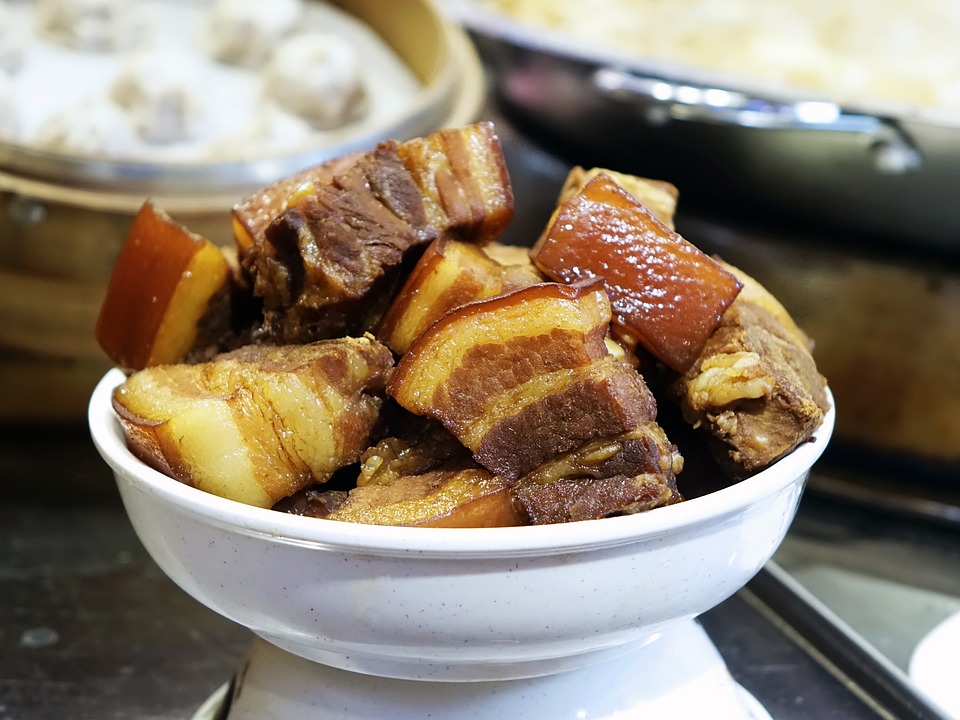[ad_1]
Soy sauce is a versatile and flavorful ingredient that can be used in a wide variety of dishes. Whether you’re cooking a stir-fry, marinating meat, or adding a savory kick to your favorite soup, soy sauce can elevate the flavor of your dish and take it to the next level. In this ultimate guide, we’ll explore everything you need to know about cooking with soy sauce, from its history and varieties to tips for using it in the kitchen.
History of Soy Sauce
Soy sauce has been a staple in Asian cuisine for thousands of years. It originated in China and spread to other parts of Asia, including Japan and Korea. Traditional soy sauce is made from soybeans, wheat, salt, and water, and is fermented for several months to develop its rich, umami flavor. Different regions have their own variations of soy sauce, with some being lighter and saltier, while others are darker and more robust in flavor.
Types of Soy Sauce
There are several different types of soy sauce available, each with its own unique flavor profile and uses. The most common types include:
- Light soy sauce: Also known as “thin” or “regular” soy sauce, this type is salty and light in color. It is often used for seasoning and marinating, as well as for dipping sauces.
- Dark soy sauce: This type is richer and thicker than light soy sauce, with a deeper color and more complex flavor. It is often used for braising, stewing, and glazing dishes.
- Tamari: This Japanese variety is made without wheat, making it a gluten-free option. It has a rich, full-bodied flavor and is often used as a dipping sauce or in salad dressings.
- Shoyu: This is a Japanese-style soy sauce that is slightly sweeter and less salty than Chinese varieties. It is often used for sushi and sashimi.
Using Soy Sauce in Cooking
Soy sauce can be used in a wide variety of dishes to add depth and complexity to the flavor. Here are some tips for using soy sauce in your cooking:
- Marinades: Soy sauce makes a great base for marinades, adding flavor and tenderizing the meat. Combine soy sauce with garlic, ginger, and a touch of honey for a delicious marinade for chicken, beef, or fish.
- Stir-fries: Add a splash of soy sauce to your stir-fry for a savory and salty kick. It pairs well with vegetables, tofu, and protein, and can bring out the natural flavors of the ingredients.
- Sauces and dressings: Use soy sauce as a base for sauces and dressings, such as a teriyaki sauce or sesame ginger dressing. It can add depth and complexity to the flavor of the dish.
- Soups and stews: A dash of soy sauce can enhance the flavor of soups and stews, adding a rich and savory element to the dish.
Cooking with Soy Sauce: Tips and Tricks
When cooking with soy sauce, keep these tips in mind to get the best results:
- Amount: Start with a small amount of soy sauce and adjust to taste. It can be quite salty, so a little goes a long way.
- Balance: Balance the saltiness of soy sauce with sweetness, acidity, and spiciness for a well-rounded flavor profile.
- Substitutions: If you’re out of soy sauce, you can use tamari, Worcestershire sauce, or fish sauce as a substitute, depending on the dish.
- Storage: Store soy sauce in a cool, dark place and use it within a few months for the best flavor.
Cooking with Soy Sauce Recipes
Here are a few delicious recipes that showcase the versatility of soy sauce:
- Soy-Glazed Salmon
- Sesame Ginger Tofu Stir-Fry
- Teriyaki Chicken Skewers
- Miso Soup with Tofu and Mushrooms
Conclusion
Soy sauce is a flavorful and versatile ingredient that can be used in a wide variety of dishes to add depth and complexity to the flavor. Whether you’re cooking a stir-fry, marinating meat, or adding a savory kick to your favorite soup, soy sauce can elevate the flavor of your dish and take it to the next level. With a little creativity and experimentation, you can discover new and exciting ways to use soy sauce in your cooking, bringing a taste of Asia to your kitchen.
FAQs
Q: Is soy sauce gluten-free?
A: Traditional soy sauce is made with wheat, so it is not gluten-free. However, there are gluten-free alternatives available, such as tamari, which is made without wheat.
Q: How can I reduce the saltiness of soy sauce?
A: You can dilute soy sauce with water or balance the saltiness with sweetness, acidity, and spiciness in your dish.
Q: Can I use soy sauce as a substitute for Worcestershire sauce?
A: Yes, you can use soy sauce as a substitute for Worcestershire sauce in some dishes, but keep in mind that they have different flavor profiles.
Q: How long does soy sauce last?
A: Soy sauce can last for several months to a year if stored in a cool, dark place. It may lose some of its flavor over time, so it’s best to use it within a few months for the best results.
Q: Can I use soy sauce in baking?
A: While soy sauce is not typically used in baking, it can add a unique umami flavor to savory bread and pastry recipes.
[ad_2]




Comments